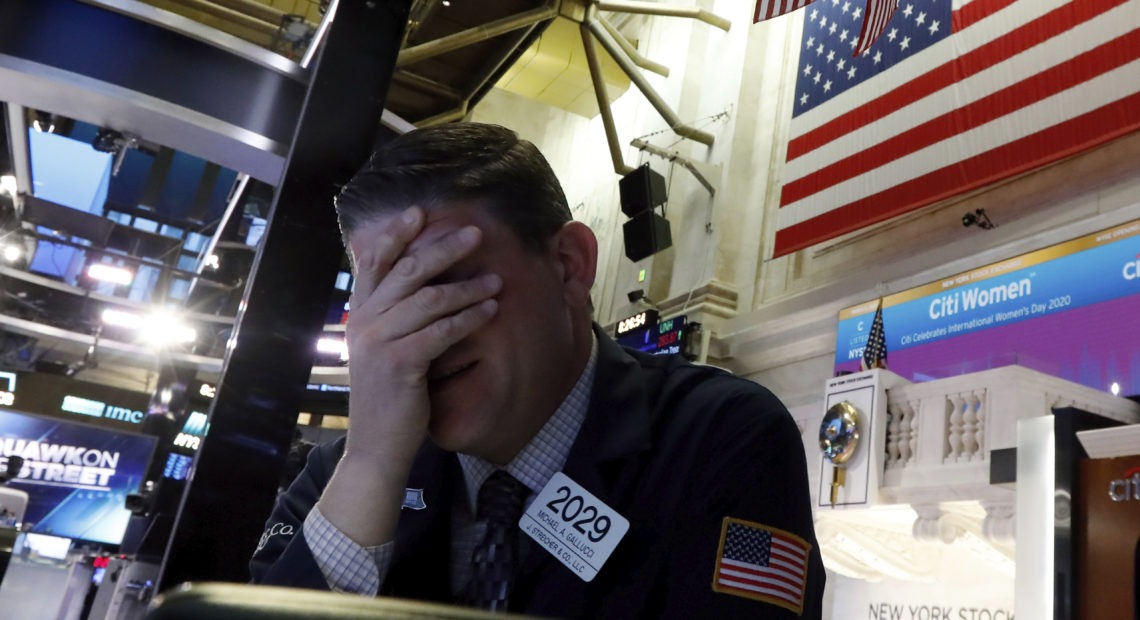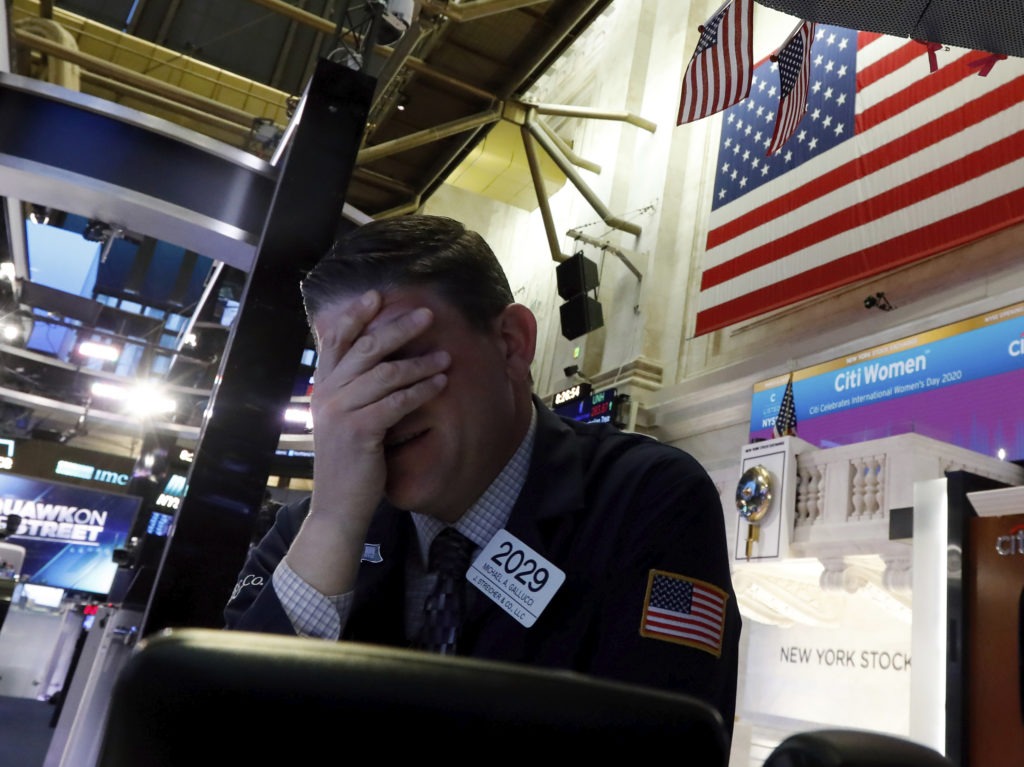
Dow Dives, New York Stock Exchange Temporarily Halts Trading As Stock Indexes Plummet
BY AVIE SCHNEIDER
Trading on the New York Stock Exchange was halted temporarily Monday after indexes plunged 7% in reaction to Saudi Arabia’s shocking oil price cut. Trading later resumed and stock indexes recovered some of their losses.
The market-wide trading halt was the first since the market crash of Oct. 27, 1997, when the Dow Jones Industrial Average dove 554 points, or 7.2%.

A trader reacts on the floor of the New York Stock Exchange on Monday. Major U.S. stock indexes plunged 7% before trading was temporarily halted. CREDIT: Richard Drew/AP
The financial market chaos comes amid increasing worries that the coronavirus epidemic will plunge the global economy into recession.
In early trading, the Dow Jones Industrial Average was down more than 1,900 points — more than 19% off its February peak. Stocks also fell sharply in Asia and Europe.
U.S. indexes rebounded somewhat, with the Dow down about 1,600 points in early afternoon trading. Both the Dow and the broader S&P 500 stock index were down about 6%.
The price of oil also fell — down about 20% Monday following the unexpected Saudi move.
As investors fled stocks and sought relative safety in government bonds, the yield on the benchmark 10-year Treasury note fell below 0.4% overnight before climbing above 0.5% Monday morning.
Over the weekend, Saudi Arabia announced a stunning discount in oil prices — of $6 to $8 per barrel — and a boost in production.
The move was a dramatic reversal from a few days earlier. Late last week, talks between OPEC and Russia collapsed after weeks of negotiations. The kingdom had tried but failed to get Russia to agree with OPEC to cut production to keep prices from falling in reaction to economic worries about the coronavirus.
The oil price war comes amid increasing fears that the coronavirus will hit the global economy hard as factories shut down, travel plans are canceled and spending grinds to a halt. In Italy’s industrial region, 16 million people are under quarantine as the country fights to control the coronavirus outbreak there.
Worldwide, there are more than 110,000 COVID-19 cases, including more than 7,000 each in South Korea, Italy and Iran, according to a dashboard created by the Johns Hopkins Whiting School of Engineering.















